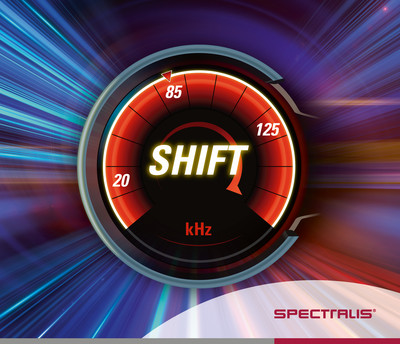Heidelberg, Germany – Heidelberg Engineering announces that SPECTRALIS® SHIFT technology is available for sale in EU markets with immediate effect.

SPECTRALIS with SHIFT technology is the first commercially available OCT that allows clinicians to switch between 20, 85 and 125 kHz A-scan rates – three OCT scan speeds to find the ideal balance of image quality and clinical workflow. With SHIFT, SPECTRALIS users can choose the most suitable OCT and OCTA scan speed for each individual patient, increasing efficiency and optimizing workflows in daily routines in practices and clinics.
“We are excited to offer this innovative approach to optimizing the performance of SPECTRALIS for each individual patient,” says Krysten Williams, Head of Global Marketing and Education at Heidelberg Engineering. “SHIFT technology is a new addition to the core DNA that is built into every SPECTRALIS. We want to empower clinicians to strike a balance between workflow efficiency and image quality at the point of care.”
SHIFT technology, available for SPECTRALIS devices of the third generation, is based on the latest SPECTRALIS features including a more powerful OCT engine, updated graphics processing technology, and a software redesign. The resulting synergies increase speed without sacrificing quality and data integrity, and optimize performance, especially for OCTA.
Three scan speeds with distinct advantages: 20, 85 and 125 kHz
SHIFT technology allows clinicians to switch between three speed options to find the perfect balance between image quality and workflow:
- 85 kHz is the default scan speed for high structural OCT image quality across the posterior segment, yielding reliable measurements and stunning images across all applications and scan patterns. It sets the standard for advanced diagnostics, such as for glaucoma assessment using the Glaucoma Module Premium Edition.
- Both the 85 kHz preset for structural OCT and the 125 kHz preset for OCT angiography (OCTA) allow eye care practitioners to complete their daily routine more efficiently. Without any relevant loss in image quality, the 125 kHz image acquisition rate allows for visualization of flow, even in miniscule vessels, while minimizing artefacts, resulting in sharp and detailed images of the capillary network.
- Slowing down to 20 kHz, the high-sensitivity OCT scan speed for challenging cases, improves the signal-to-noise ratio and helps resolve details even in eyes with media opacities and small pupils. Users can capture meaningful images when other devices or standard imaging modalities cannot deliver sufficient quality due to cataracts, corneal edema, or dense floaters, particularly in combination with the new Enhanced Vitreous Imaging (EVI) or Enhanced Depth Imaging (EDI) modes.
Backward compatibility and sustainability
SHIFT offers full backward compatibility with existing patient data and functionality, meaning it can be integrated easily into legacy clinical infrastructures, with minimal training.
With the latest SPECTRALIS software, Heidelberg Engineering introduces the electronic instructions for use (eIFU) as the new standard. The switch from hard copies to pre-installed PDF files makes relevant information readily accessible on the SPECTRALIS, making the device even more sustainable. In countries with specific import regulations, hard copies are still delivered as well as whenever customers explicitly order them via the Heidelberg Engineering Business Lounge.
For more information on Heidelberg Engineering SHIFT technology, please visit www.spectralis-shift.com.


